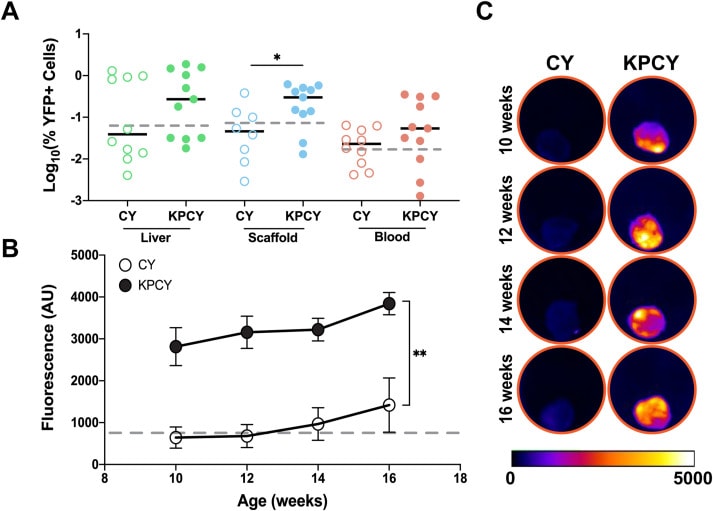Individuals with pancreatic cancer face a worse disease prognosis than those diagnosed with other forms of cancer, as stage IV pancreatic cancer has a five year survival rate of 1 percent. The survival rate of localized pancreatic cancer is around 33%, while many other cancers have a rate exceeding 90%. This is largely a result of factors such as the aggressive nature of the disease and a prevalent rate of delayed detection and diagnosis. Many new technologies and techniques, such as the one applied in this study, aim to make early detection screenings more widely available and more likely to improve therapeutic benefit.
The research team developed biomaterial scaffolds to recruit metastatic tumor cells and to reflect the immune dysregulation of native metastatic sites, a method that has been applied to orthotopic breast cancer models, but its potential in numerous other models has gone unproven. The scaffolds ended up recruiting “disseminate pancreatic cells in the KPCY model of spontaneous pancreatic cancer prior to adenocarcinoma formation (3-fold increase in scaffold YFP+ cells).” Also, it was concluded that the scaffolds could distinguish spontaneous pancreatic cancer from spontaneous breast cancer, as it was indicated through the differential immune response. The research findings demonstrate that scaffolds can be utilized to identify early disease stages in the KPCY pancreatic cancer model, and can lead to improved treatment and prognosis rates. The paper, titled “Disease-induced immunomodulation at biomaterial scaffolds detects early pancreatic cancer in a spontaneous model,” has been accepted and published in the February issue of the Biomaterials journal.
